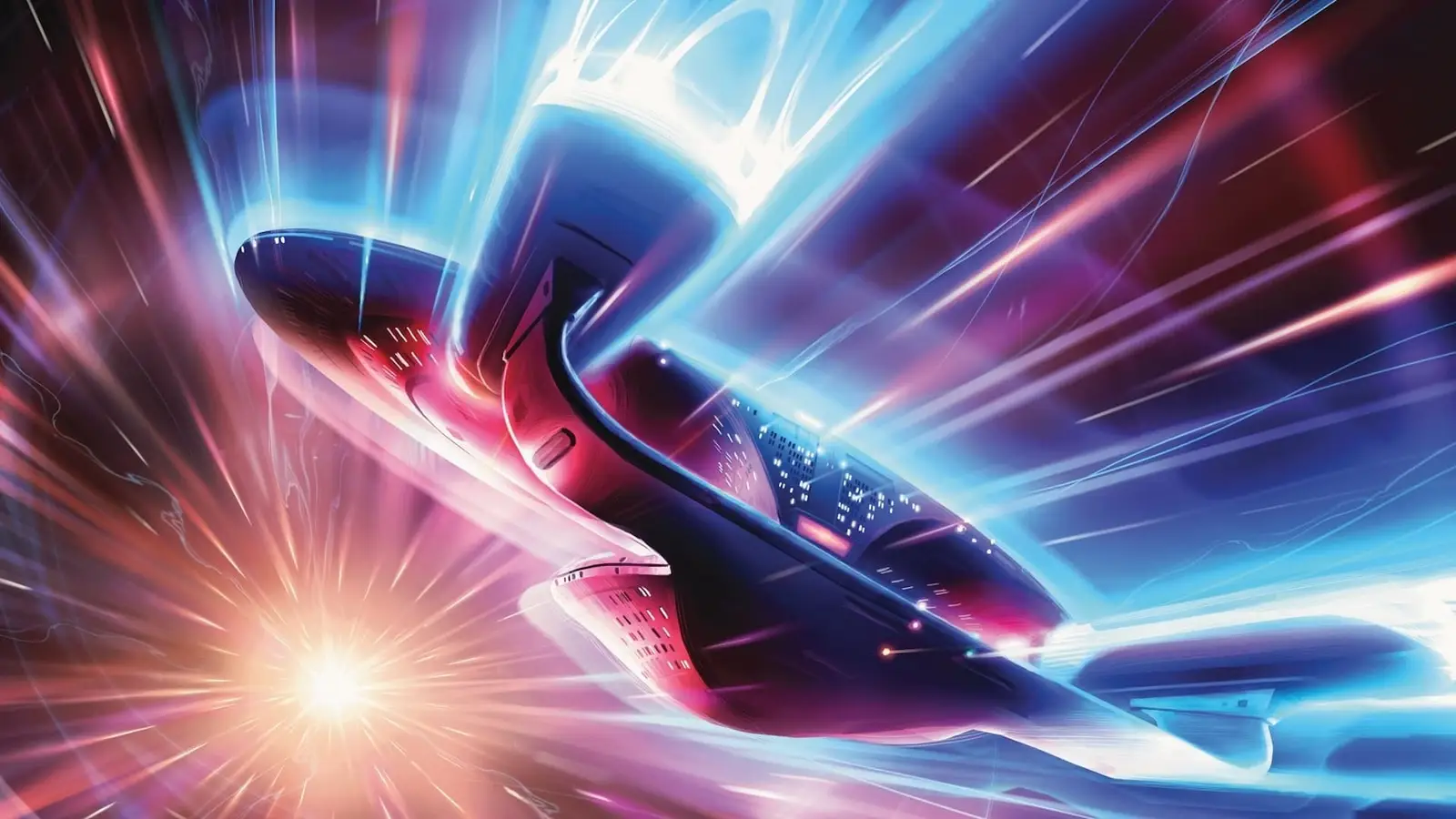Copyright Screen Rant

Warning: contains spoilers for Star Trek: The Last Starship #1! After 59 years, the most important era in Star Trek history has officially come to an end. IDW’s new Star Trek: The Last Starship brings Captain Kirk back to the franchise, and series writers Jackson Lanzing and Collin Kelly have revealed it also removes one of its central devices: warp drive. Lanzing and Kelly recently spoke with Brian Cronin of Comic Book Resources about Star Trek: The Last Starship, which is drawn by Adrian Bonilla. In discussing the book’s structure, the writers revealed that it will be set in different time periods. Elaborating further, Lanzing had this to say: The way their trans-warp drive functions changes the way warp drive operates in the Star Trek universe. It would be cheating to say we got rid of dilithium but have another thing that works the same with no downside. For the first time in Star Trek history, we are introducing relativistic time. Writing a Star Trek book with relativistic time dilation creates a totally different cadence. That hard sci-fi angle lets every three issues be a place for a new fan to jump in. Effectively, the warp drive era of Star Trek history is over. Faster Than Light Travel is a Staple of Science Fiction, But Hard to Do in the Real World Star Trek Created Warp Drive to Get Around the Universal Speed Limit Traveling between star systems is one of science fiction’s oldest tropes, but unfortunately it is out of humanity’s reach, at least for now. According to Einstein’s Theory of Relativity, the closer a vessel gets to the speed of light, the more its mass increases, necessitating even more energy to maintain the speed. This creates two major problems: first, the amount of energy required to maintain those speeds is beyond the capabilities of human technology at the moment. Second, time begins to flow differently as the vessel approaches light speed. For the vessel’s crew, time will seemingly proceed as normal, but for those on the outside, thousands of years will have passed. As a workaround for this dilemma, the concept of faster–than-light (FTL) travel was invented by science fiction writers. How exactly a vessel gets around the universal speed limit varies between works, but in the Star Trek universe, warp drive distorts the surrounding space, bending the rules and allowing a ship to travel at faster than light speeds. Despite the difficulties that surround traveling faster than light, real scientists, such as Doctor Miguel Alcubierre, have proposed models of warp drive that could (theoretically) work. However, the technology and energy requirements neccessary for Doctor Alcubierre's warp drive to work are still beyond current capabilities. Within the Star Trek universe, warp drive is seen as a species’ crowning achievement, and a signal they are ready to join the intergalactic community. Earth developed warp drive in the mid-21st century, thanks to the work of folks like Zefram Cochrane and Lily Sloane. Warp drive was also instrumental in helping humanity evolve into a mature species. Star Trek: Discovery's "The Burn" Brought Warp Drive to an End New Types of Star Trek Stories Can Be Told Without Traditional Warp Drive Star Trek: Discovery revealed that, in the 30th century, a catastrophic event known as “the Burn” happened. The Burn caused the galaxy’s dilithium supply to explode. As this element was a crucial component of warp drive, galactic travel, and thus galactic civilization, came to a halt. In the wake of the Burn, the Federation fell apart and chaos engulfed the galaxy. While Discovery ended with warp travel being reestablished, the story of the years between has not been told, which is where Star Trek: The Last Starship comes in. Beginning weeks after the Burn devastates the galaxy, a faction of the Borg, headed by Agnes Jurati, revive Captain Kirk, to use him as a symbol for the Federation to rally around. In The Last Starship’s first issue, not only do the Borg resurrect Captain Kirk, they give the titular last starship, the Omega, a new type of propulsion that they call “transwarp.” In the Star Trek universe, the term “transwarp” has been used as a catch-all for anything transcending traditional warp drive. Lanzing admitted that allowing regular warp travel to proceed in The Last Starship while it is denied to the rest of the galaxy was “cheating.” Lanzing is correct in this assessment, and the lack of warp drive and the protections it provides against relativistic time dilation will actually allow for new types of Star Trek stories to be told. Without Warp Drive, a Star Trek Era Has Come to an End Star Trek Helped Add "Warp Drive" to the Vocabulary of Pop Culture Warp drive has been central to Star Trek lore since its premiere 59 years ago, and it can be argued the franchise helped popularize the concept. Warp drive allowed the Federation to exist in the first place, and without it, one of the biggest, and most important, eras in Star Trek history has ended. Star Trek: The Last Starship #1 is on sale now from IDW Publishing!



